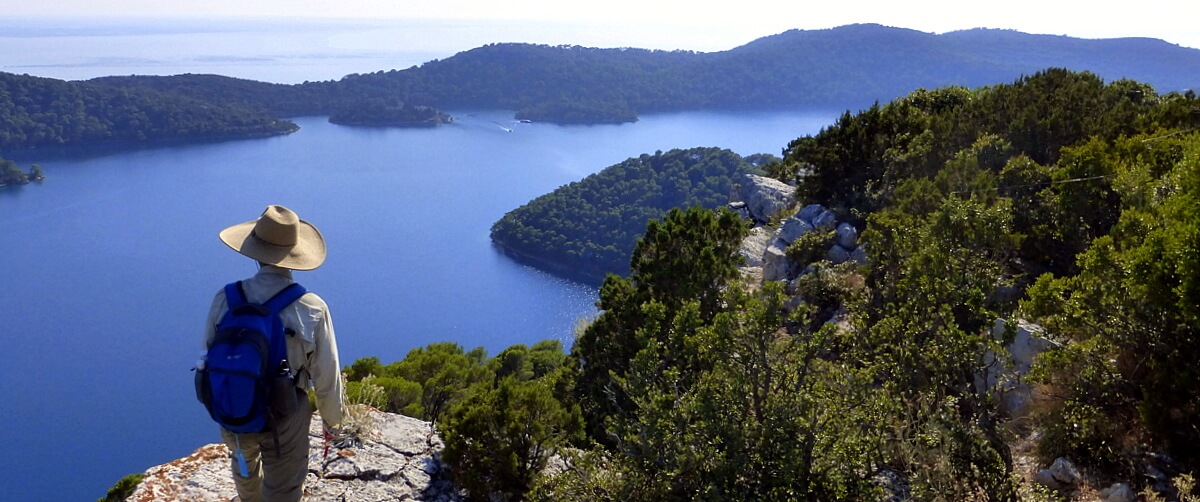“Have you ever dreamed of a place far away from it all? Where the air you breathe is soft and clean and children play in fields of green…”
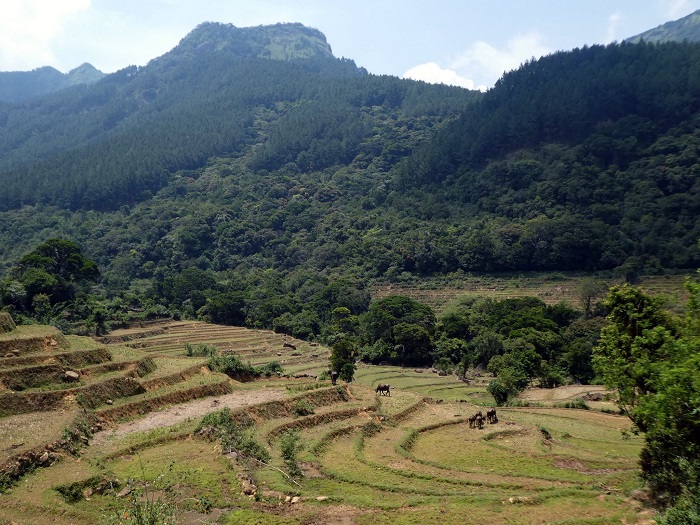
These lyrics were penned by Burt Bacharch for one of the songs in the 1973 movie “Lost Horizon,” based upon a book by the same name written in 1933 by James Hilton. It’s a story about the discovery of a utopian valley in the Tibetan Himalayas discovered by a group of Western passengers from a crashed airplane.
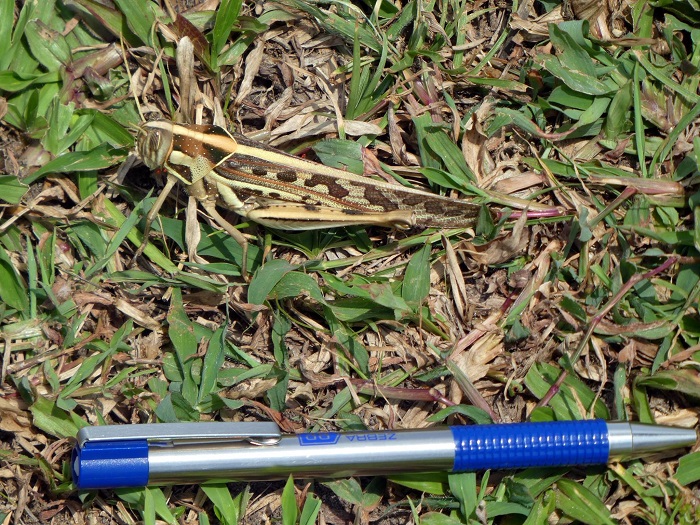
About three weeks ago, our Wild China group actually visited a modern day Shangri-La in China’s Yunnan Province, near the border with Tibet. Town fathers had changed the name of the place to Shangri-La on the pretext that the area was James Hilton’s inspiration for the story; some believe it was simply a ploy to increase tourism.
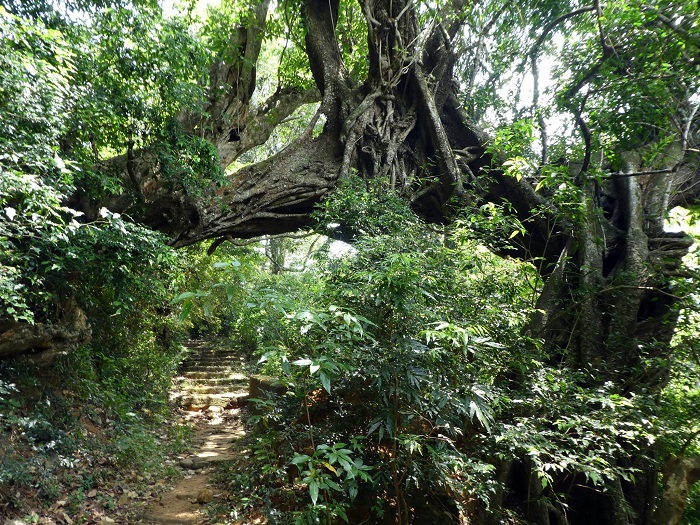
Today I had the privilege of visiting a valley in Sri Lanka that far better matches the mythical image of a “Shangri-La” in terms of authenticity and “being far away from it all”. The greater area is known to the outside; in fact it is on UNESCO’s World Heritage List. But we saw no outsiders, either Sri Lankans or foreigners, during our 4-hour visit in the valley. So far, this hidden place is still off the radar of visitors. Windy mountain roads, primitive at times, that don’t lead anywhere else, could be partially responsible for the low profile of this high mountain valley.
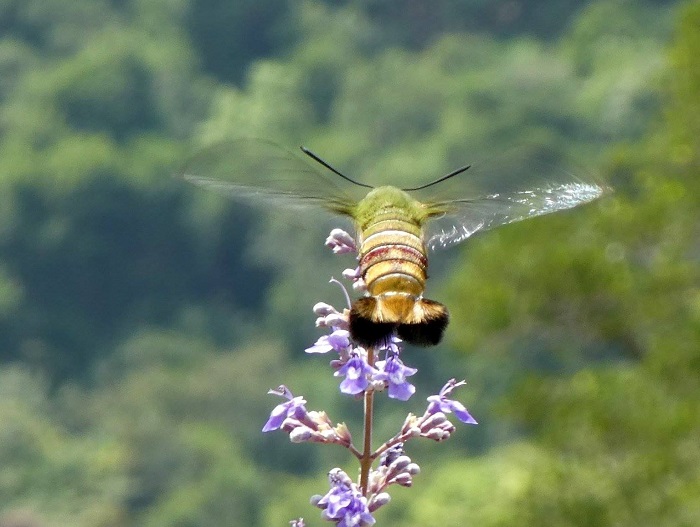
Approximately 200 families, Sinhalese Buddhists, have developed five different villages living in traditional ways. Life progresses slowly according to the rhythms of the seasons and the crops. A barter system is used in the valley and excess rice produced, of which there is usually plenty, is sold to the outside. Most of what is consumed here is produced in the valley’s rich soils and friendly climate. Families get together periodically and rent a truck to go shopping on the outside for commodities and goods that can’t be produced internally.
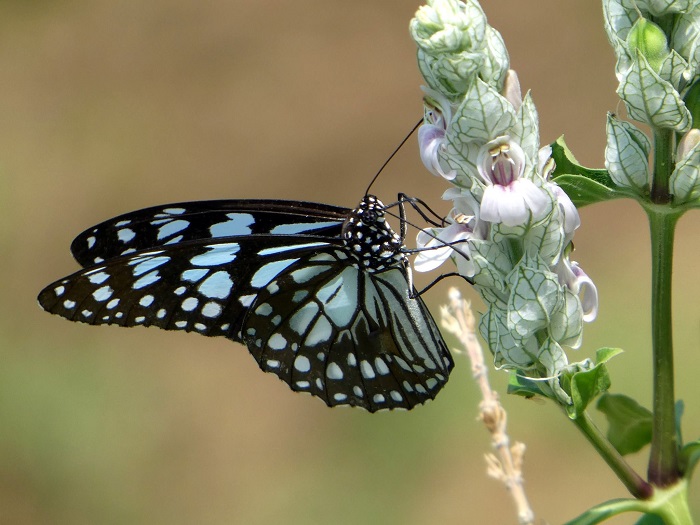
Dileep has developed a relationship with some of the locals and we were met upon arrival by Wasantha. After he and Dileep pow wowed about the walk and what we were looking for, we were served the obligatory cup of tea, and Wasantha led us on a narrow, winding trail along the valley floor, through rice paddies, and along a pretty stream. Lemongrass butterflies, and a few less common species, were all around us.
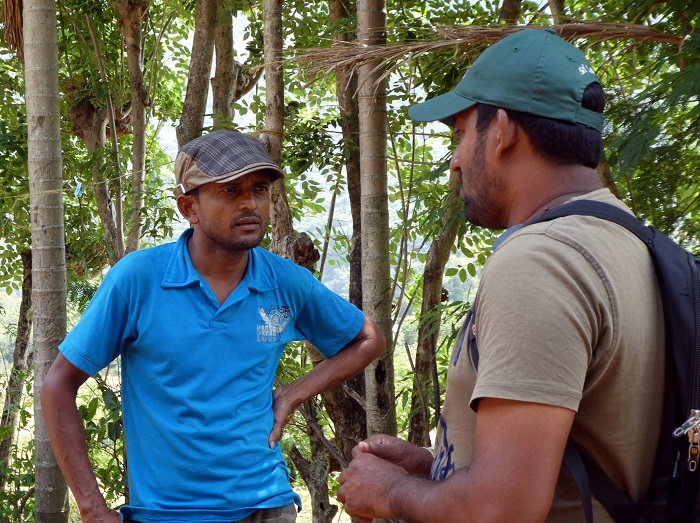
We were there during the dry season, and the rice had long since been harvested. When we return in January, it will be the growing season and the fields will be green. The water buffaloes I saw today, however, will have been banished for a time. Dileep told me they are semi-wild. The villagers use them to prepare the fields twice a year. During the growing season, however, they are taken to a high mountain plateau, and access routes back into the valley are blocked to prevent crop damage by hungry buffaloes.
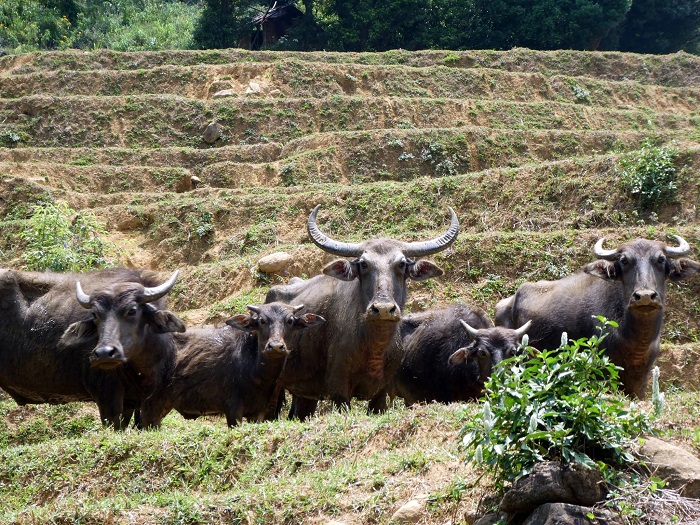
The trail had a few difficult sections, and Dileep and I discussed options and alternative routes with Wasantha. On the other side of the valley, at the last of the five villages, we stopped in a local home for lunch. Just like at the farm lunch the other day, all the food was locally grown and prepared. Having lived on Asian food now for nearly five weeks, my tolerance level for spicy food and curry is just a shade below enthusiastic. But once again, the table was full of quality dishes which I thoroughly enjoyed.
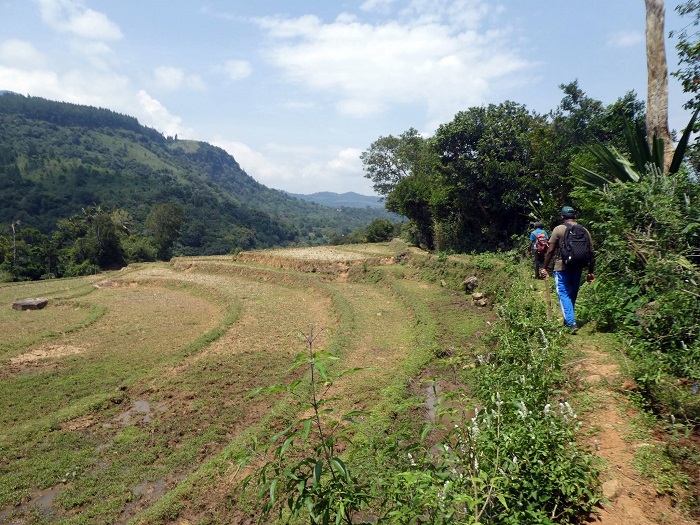
Just as Dileep, Ajip (our driver) and I started our meal (Wasantha and the family had already eaten), rain began to fall and we moved the buffet into their home. As expected, the interior was clean and humble. At least that is the impression I had; it was a little hard to tell since power had gone out and the room was dark. The little boy of the family, about 4-5 years I would guess, came in to check us out, grabbed a banana from the dessert tray, and ran into the other room triumphantly holding aloft his trophy.
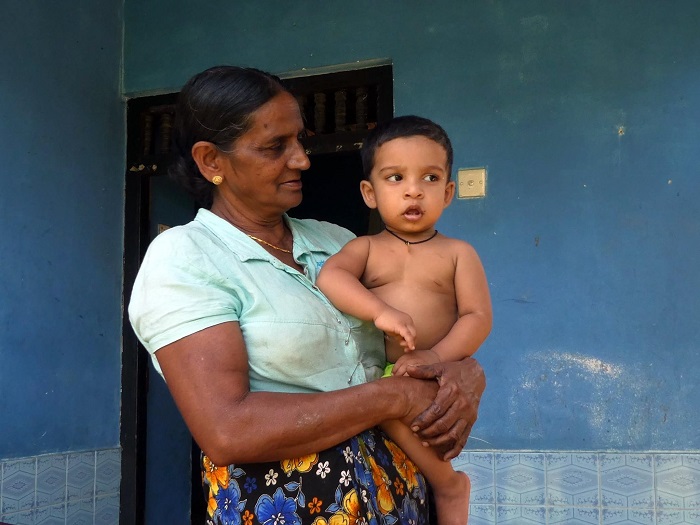
We thanked the family and started to leave. On the way out, the husband and father showed us his garden. So many things were being produced (in a relatively small space) that looked like ornamental flora. Dileep reminded me that they have nearly everything they need right in the valley. It is a veritable Garden of Eden, even better than Shangri-La.
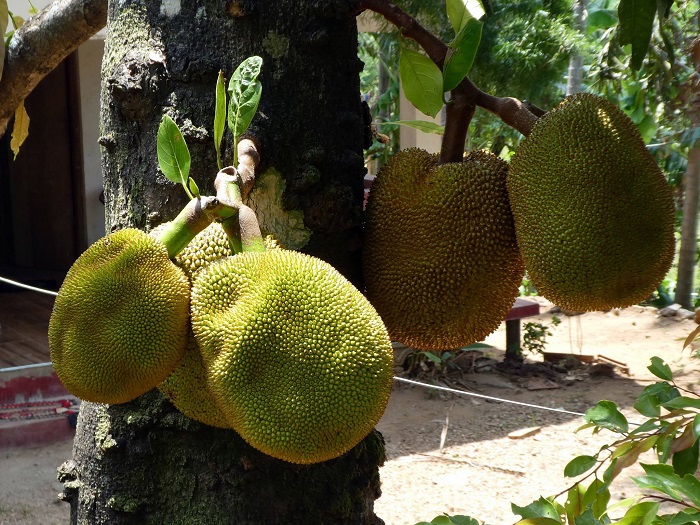
As we headed back across the valley to our start point, we strategized on how to manage options for the group. We also discussed the lifestyle of the place. Stress is a foreign concept, Dileep explained. They have almost no expenses, while every time we turn around we are engaging in some kind of activity that requires payment of cash. Lives tend to be longer; we passed one elderly looking lady whom Wasantha and Dileep briefly engaged. Dileep told me she was 86 years old.
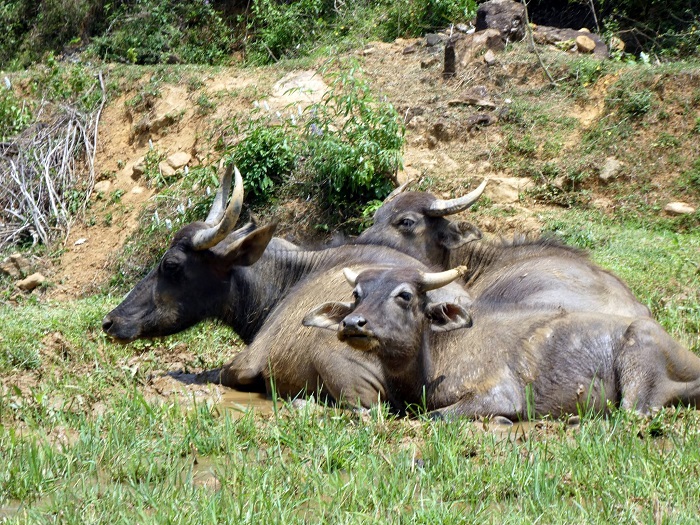
I look forward to bringing our groups into this hidden valley, but I confess that I have mixed feelings about bringing outsiders into such an area. So often, tourism alters a place. Life in the valley is changing and will continue to change. A new bridge is under construction, for example, to link a road to the far side of valley. But once a place like this is written up in travel books, and tour planners begin promoting it in larger numbers, the changes accelerate. I am not against change. I simply hope the decisions to transition towards a modern lifestyle are made slowly and deliberately, that they are made internally by wise leaders, and are not unduly influenced by outside promoters and developers who convince the villagers to trade their placid way of life for the conveniences and stresses of the 21st century.
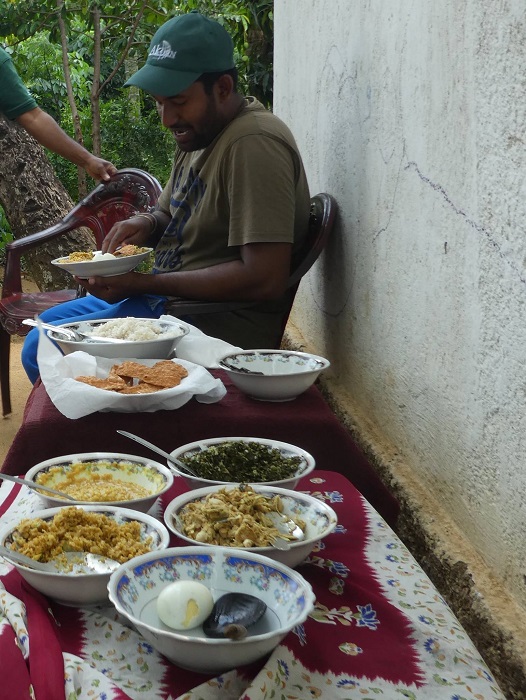
For this reason, the name of this valley will not be listed in any Walking Adventures literature, except to call it the “Sri Lankan Shangri-La”.[/vc_column_text][/vc_column][/vc_row][vc_row][vc_column][vc_gallery interval=”3″ images=”10920,10916,10928″ img_size=”large”][/vc_column][/vc_row]

